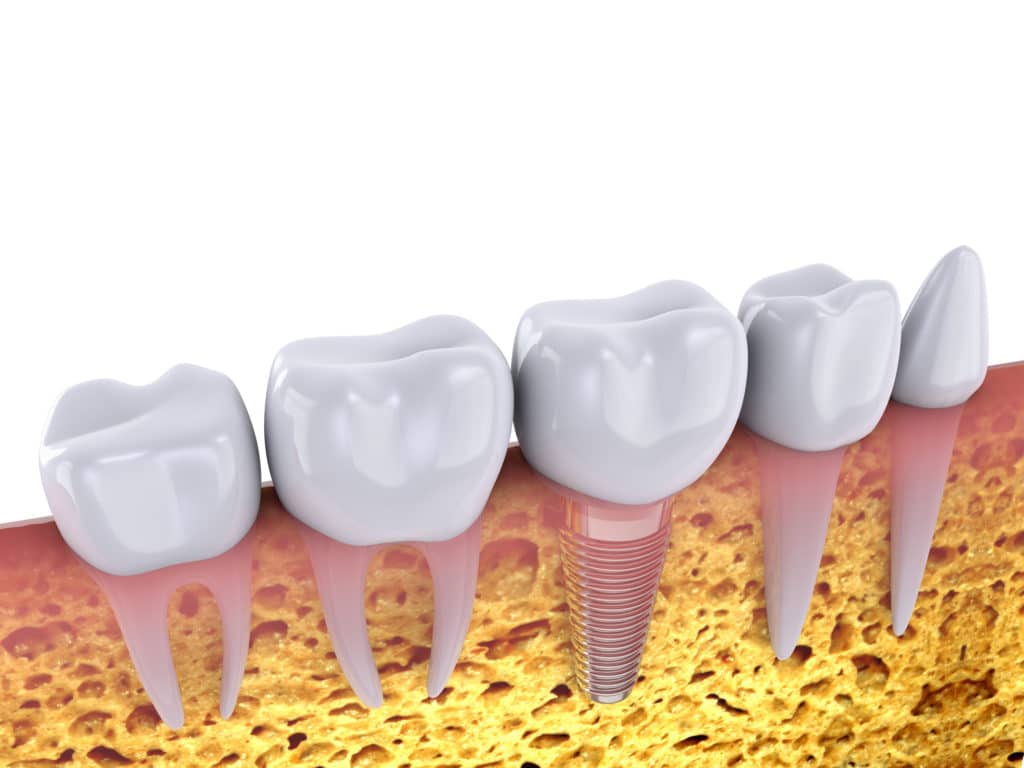If you have a missing tooth or teeth, you have a few options to choose from for replacement. However, only one option, a dental implant, is a permanent solution that works like a real tooth.
It is important to keep in mind, though, that placement of a dental implant is surgery. Also, because a patient must have strong, healthy bone tissue for an implant, some patients require regenerative treatment before placement. This could include a bone graft or sinus lift.
Therefore, you want to be sure you choose the best dentist for this procedure.
At Austin Laser Dentist, Dr. Helen Ragsdale has over 25 years of experience and is well-equipped to handle most dental needs. If you live in the Austin area, she is the dentist you can trust to deliver top-notch care in a comfortable, friendly, informative environment.
You can also trust her if your particular needs fall outside her level of knowledge and experience. Therefore, she occasionally refers patients to a trusted periodontist or oral surgeon who can best cater to you and your unique needs for implant placement. Once your implant is healed, Dr. Ragsdale will place your new restoration.
How does a dental implant work like a real tooth?
When a patient has a missing tooth, whether from trauma, extraction, or hypodontia (the tooth or teeth never formed), most people only see the obvious gap in the smile. However, the missing tooth root is also a huge factor that you should consider.
While crowns, bridges, and dentures fill in gaps from missing teeth, they do nothing to replace the tooth root. This is an important factor, as the roots create micromovements in the jaw that stimulate nerves and preserve bone structure. When a tooth root is missing, the lack of this movement causes bone deterioration, which can lead to further tooth loss. It also causes changes in the facial structure, creating a hollowed or sunken-in appearance.
The dental implant is a small titanium post placed in the jaw that restores the tooth root. Once placed, it causes a process called osseointegration to occur. This process causes bone tissue to form around the implant, fusing it to your jawbone.
In addition, the presence of the implant mimics the micromovements of a tooth root, preserving bone tissue.
Once healed and fused, a restoration, such as a crown, bridge, or denture, is placed on the implant post, creating an entire replacement of the tooth that looks, feels, and acts real.
What are the dental implant restoration options?
The type of restoration you need will depend on your unique needs and desires. The options include a dental crown, bridge, or denture.
Option #1: Implant-Supported Dental Crown
If you are missing one tooth, or if you have several non-adjacent teeth missing, you will need crown placement. This option is a tooth-shaped cap that is affixed to the implant to replace the visible part of the missing tooth or teeth. It is designed to match your remaining teeth in shape, size, and color, giving it an aesthetically pleasing look.
Option #2: Implant-Supported Bridge
For patients missing one to three adjacent teeth, Dr. Ragsdale may recommend a bridge. This option “bridges the gap” of missing teeth. A bridge contains pontics (fake teeth) that fill in the gaps. Implants on both sides of the missing teeth anchor it in place.
This is a much sturdier, more stable option that a traditional bridge, which requires enamel removal on remaining teeth for the placement of crowns to support the bridge.
Option #3: Implant-Supported Dentures
Many people are familiar with traditional dentures and the many negative effects they can cause. Because nothing replaces the tooth roots, bone deterioration takes place. This changes the fit of dentures, often leaving patients with dentures that slip or fall out when they chew or speak. Also, dentures are not a permanent option and must be replaced every ten years or so.
But dental implants have changed all this. Because implants mimic and replace tooth roots, the jawbone is preserved. Also, the strength and stability of implants offer an excellent anchor for a denture. When it comes to implant-supported dentures, there are two options: Removable or fixed. The type you choose helps determine how many implants you will need.
For many patients, two implants can be enough for removable dentures. With this option, the denture snaps onto the implants for a secure fit, so they will not slip or shift. However, the denture is removable for easier cleaning.
With fixed dentures, patients typically need four to six implants. Once the posts have healed, Dr. Ragsdale will fix the denture in place with screw-retention or dental cement.
Call Austin Laser Dentist Today
If you are missing a tooth or tooth, do not put off treatment, as this causes many negative effects, including bone deterioration, shifting of the remaining teeth, and an increased risk of decay, gum disease, and further tooth loss.
No matter which restoration option you need, the dental implant is the key factor in giving you a beautiful smile that feels and looks natural.
To find out if you are a dental implant candidate, call (512) 346-4690 today to schedule your consultation.

